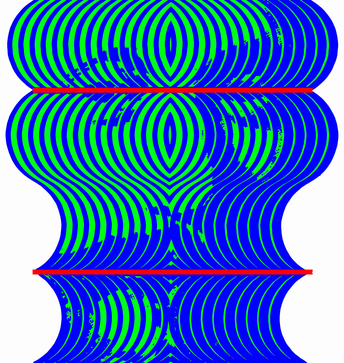Franz Carl Müller-Lyer1857–1916
Müller-Lyer produced a novel figure which resulted in errors of space perception. In the Müller-Lyer illusion: “the arms of an acute angle appear shorter and those of an obtuse angle longer than equally long arms of a right angle”. Müller-Lyer illustrated some variations on this simple arrangement and many others have been devised making this the most studied geometrical illusion. He did examine some aspects of the illusion systematically; the effect of arm angle and arm length were manipulated, and he did relate the distortion to angle interaction in the natural environment. Were it not for the simple line drawings he published in 1889 few psychologists would know his name, although he later made an impact on sociology. The study of geometrical-optical illusions reflected the Zeitgeist of late nineteenth century psychology, and many of the now familiar configurations bear the names of psychologists of that period. Illusion figures could have been drawn at any time in the preceding two millenia, but they required a theoretical focus. Visual illusions represented the independence that psychology had won from physiology. Enough was known of the dioptrics of the eye to satisfy physiologists that the projected dimensions of the figures onto the retina were not distorted, hence the effects must be a consequence of higher processes which were not accessible to physiological enquiry, and belonged to the domain of the new psychology. Geometrical-optical illusions were interpreted in terms of eye movements, angle expansion effects, the operation of perspective, and confusions between parts of the display. Müller-Lyer favoured the last: “The lines are judged to differ in length because the judgment takes not only the lines themselves into consideration, but also, unintentionally, some part of the space on either side”. Müller-Lyer was born in Baden-Baden and studied medicine at the Universities of Strasbourg, Bonn, and Leipzig, and psychology and sociology at the Universities of Berlin, Vienna, Paris, and London. Among his teachers were du Bois-Reymond and Charcot. From 1888 he settled in private practice in Munich and wrote extensively on sociology. A graphically embellished variant of the illusion is shown here: the red horizontal lines are of equal length, but the upper one appears longer. The portrait of Müller-Lyer is contained within the design, with the horizontal lines bisecting his eyes and mouth.
